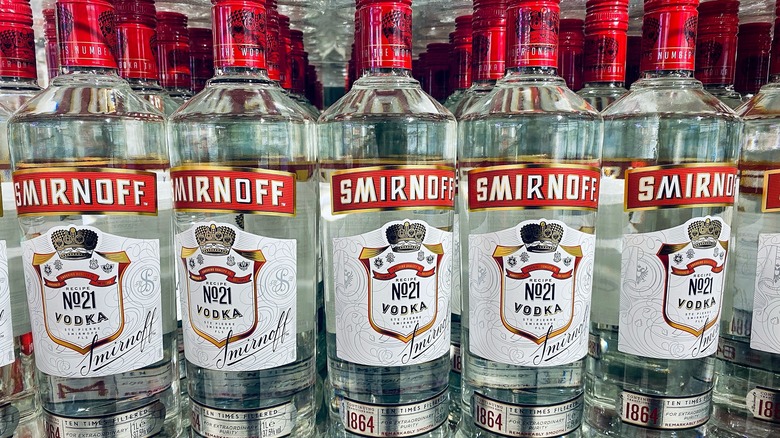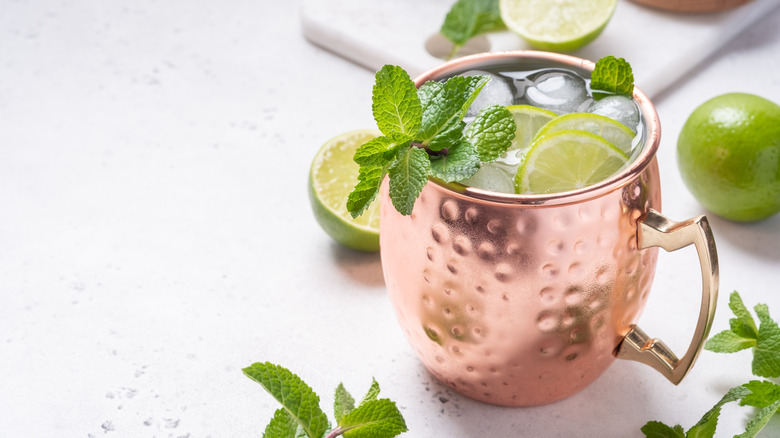Why Smirnoff Vodka Was Originally Branded As A White Whiskey
There are few better-known vodka producers than Smirnoff, the world's best-selling vodka brand. As the top performer in its parent company Diageo's portfolio, it's known to sell upwards of 26 million cases a year, and as of 2022, was still showing notable sales growth. Spirit and cocktail fans, it seems, just can't get enough. Because of its clean flavor profile, it's easily the most versatile bar cart staple — suitable for making dozens of vodka cocktails – from martinis and fizzes to Moscow mules and spiked lemonades.
Americans didn't always appreciate a high-quality, blank-canvas spirit, though. It took some convincing to get United States imbibers to warm up to vodka. That convincing was achieved by Smirnoff's clever marketing. So not only is it the world's best-selling brand, but it's also the brand we can thank for vodka being popular in the US to begin with.
The longtime spirit of choice for Americans was whiskey. As America developed after the Revolutionary War and looked to build its economy with domestic goods, whiskey stood out because it didn't need to be imported like another popular spirit, rum. American affinity for whiskey grew to the point that when Smirnoff vodka hit US shores in 1939, Americans had no interest in a clear spirit boasting clean flavor. So, a South Carolina salesman for the brand decided to pitch vodka as a "white whiskey." Once Americans saw Smirnoff as a lighter version of something they already loved, vodka took off.
How Smirnoff invented a classic cocktail
Pyotr Smirnoff established his distillery in Moscow in 1864, intending to bring high-quality vodka (usually only available to royals) to the common people. He was one of the first to employ charcoal filtration for vodka unparalleled in purity. It was a hit with his fellow Russians, but Americans needed that "white whiskey" branding to get them to try vodka and appreciate its purity. Smirnoff's American marketing strategy also led to the development of a legendary cocktail.
The man who brought Smirnoff to the US, an English expat named John Martin, began going door-to-door to get the vodka into bars. To showcase vodka's versatility and its potential to take on interesting flavors, he partnered with Jack Morgan, the owner of Hollywood bar Cock 'n Bull, to invent the Moscow mule. It just so happened that Morgan was trying to push ginger beer, which paired beautifully with vodka. So, while there are plenty of good vodkas to use in a Moscow mule, Smirnoff is the one to thank for the tipple. The drink took off, as did vodka martinis in the 1960s, and Americans never looked back to the days of snubbing this clear spirit. The next time you make a refreshing martini with vodka instead of whiskey, you can thank Smirnoff.

